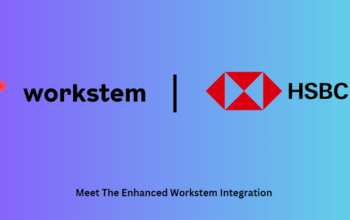With 2020 upending even some of the most basic fundamentals in business, HR leaders have had to navigate a whole new set of challenges ranging anywhere from the difficulties of remote work to comply with a whole new set of work-safety regulations (social distancing, temperature checks, etc.) at the office.
Naturally, the trials and tribulations of the COVID-19 pandemic are setting up 2021 to be a year of transformation for HR.
In this article, we’ll be going through the HR trends we’ll see emerging in 2021.
Company culture takes center stage
With remote work now the safest way for employees to do their job, a company culture employees can get on board with will be the deciding factor for whether they stay on in the long term. In fact, a study on company culture has found that employees who fit well in their organization also report greater job satisfaction and show superior work performance.
In the ‘new normal’, company culture will have to take center stage in assuring employees their well-being matters. Companies should work with their HR leaders in providing proper mental health services to their staff during this difficult time, as well as allotting time for engagement activities.
Where company culture was once a by-product of an organization’s work, it will be HR’s responsibility to make sure it becomes a priority and it’s benefits are fully realized.
Data and analytics will be everywhere
Data and analytics have been an oft-repeated topic on HR trends lists, but with good reason. People analytics, meaning data on what staff are doing, why they are doing it, and how it impacts the organization, will quickly be the best option for businesses to keep track of their employees in a remote setting.
HR in 2021 will do well to pinpoint the key metrics their organization should be looking at. For example, tracking data on metrics such as hours worked, absence rate, absence rate per manager, and training expenses per employee could address key problem areas of the organization and create more return.
In the context of remote work, employee monitoring software for remote teams becomes essential. These tools provide comprehensive insights into employee activities, helping managers maintain productivity and ensure efficient workflow even when the team is dispersed. Such software can track work hours, project progress, and communication patterns, giving a clear picture of remote team performance.
Software such as Workstem’s readily provides several features that track important employee data. Beyond basic employee information such as job title and qualifications, the software’s attendance system automatically records an employee’s standard working hours as well as any overtime. Additionally, the software’s leave management system tracks how often employees request for time off and why. These features easily give a bird’s-eye view of attendance trends among employees and alert management to early signs of attrition.
Flexibility will move from ‘where’ to ‘when’
Prior to the pandemic, having flexibility at work usually meant the ability to work from home. Yet in a time when this is now arguably the norm, the next wave of flexibility will be centered around allowing employees to decide when they want to work.
In 2021, more and more companies will allow employees to set their own hours. Therefore, the focus for productivity will no longer be how many hours an employee puts in but rather whether their desired output was achieved. Features such as Workstem’s Single Sign On (SSO) even makes work easier, as employees can log-in through either the web or app version of Workstem. Additionally, SSO enables employees to work from anywhere at any time without concern—truly the definition of flexibility.
Technology such as Workstem’s SSO not only means the transition to remote work can be seamless, but a sign that businesses are creating products with remote work in mind.
With the trends above just the tip of the iceberg when it comes to change, this year promises to be a revolutionary one for the world of HR. As business partners, HR leaders would benefit greatly by preparing for these trends in advance.
Read More:
How to Choose a Payroll & HRM System?
Not Just for the Big Companies: Why a Payroll Management System Is Crucial for SMEs






![[418 Guide] Ordinance 418 And Continuous Contract](https://www.workstem.com/wp-content/uploads/2023/08/Untitled-design-min-350x220.png)
